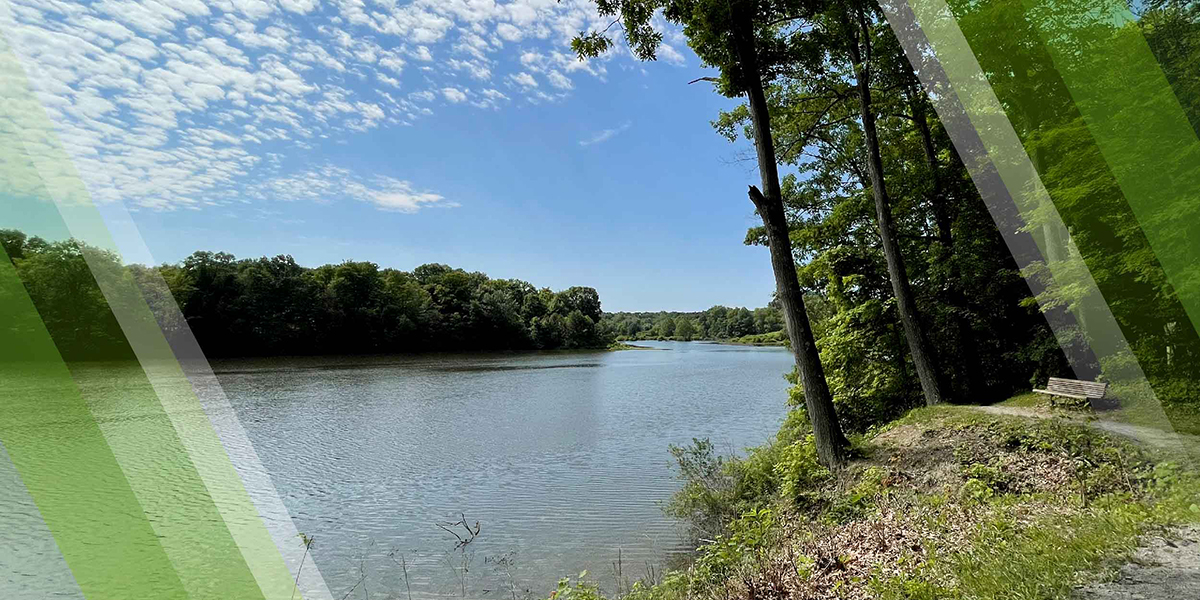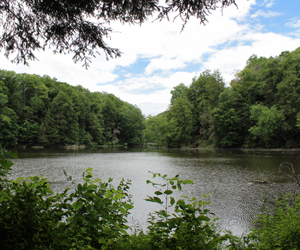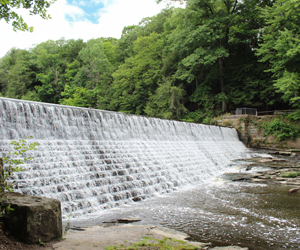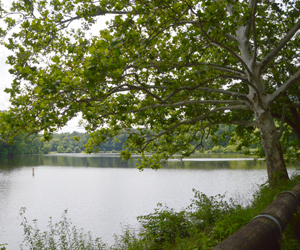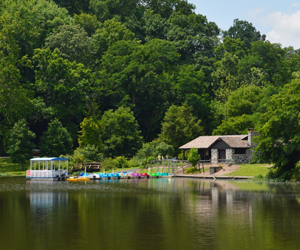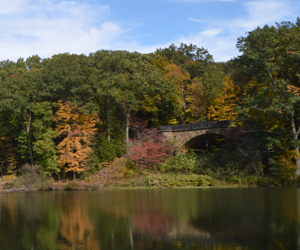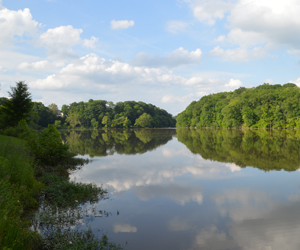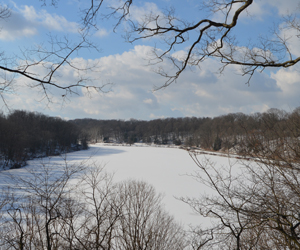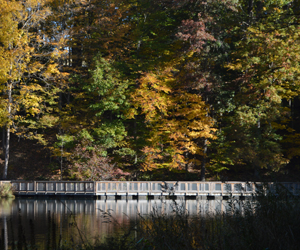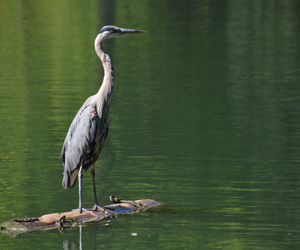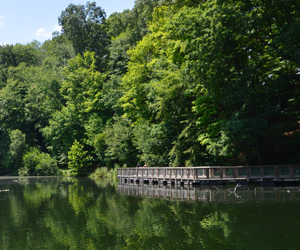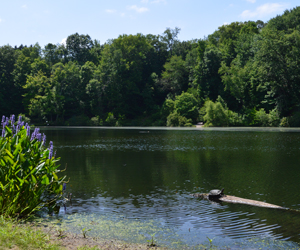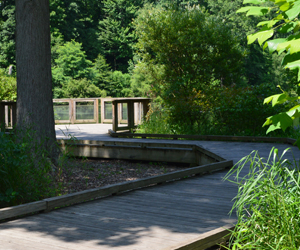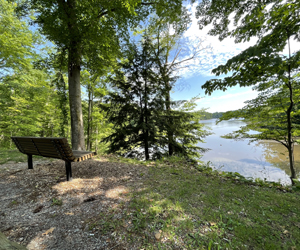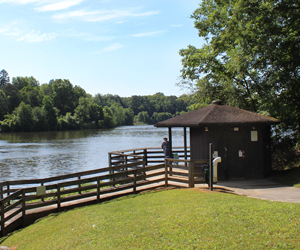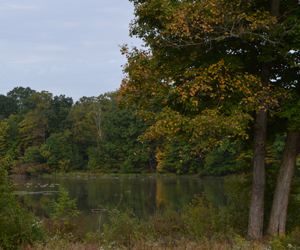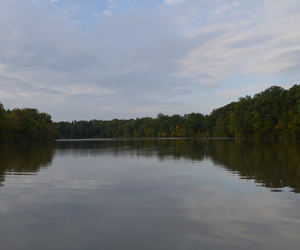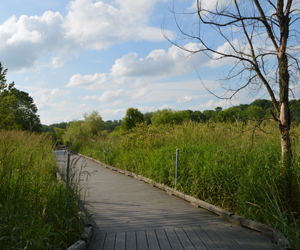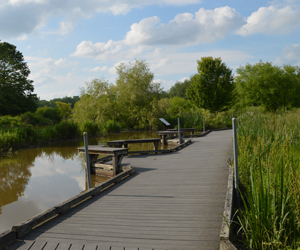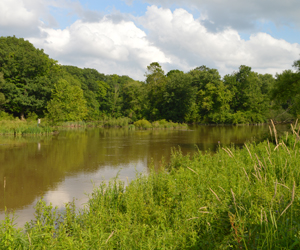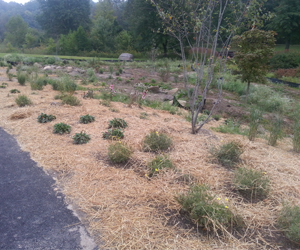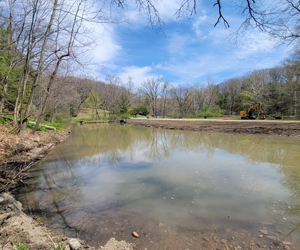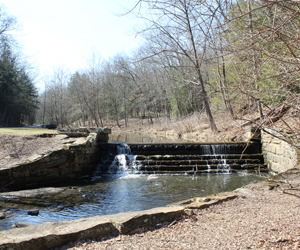LAKES & PONDS
Lake Cohasset, the oldest of Mill Creek Park’s lakes, was built in 1897 and is known for its stately hemlocks. This 28-acre lake offers visitors a secluded place to view wildlife in their natural habitats. Boating is not permitted on Lake Cohasset. Fishing is permitted. Hikers can access West and East Cohasset Trails to experience this beautiful area.
The Lily Pond (3.25-acres) has been a popular site for migrating waterfowl and resident goldfish since 1896. Visitors can enjoy this area by taking the .25-mile Lily Pond Circle Trail that loops around the pond. Fishing is not permitted at this location.
An extensive restoration project at the Lily Pond was completed in 2016. The purpose of the project was to restore the attributes and functions of the Lily Pond that had deteriorated from heavy use and frequency of visitors. A bottom-diffused aeration system was installed in 2019, this improves water quality and wildlife habitat through increased dissolved oxygen levels.
Some of the new features include a floating boardwalk, two observation decks to bring visitors to the water’s edge, native vegetation to create seasonal interest and pockets of diverse habitat, a bioswale, biofiltration area, and permeable pavers to prevent storm water runoff and pollutants from entering the Lily Pond, educational interpretive signage, comfort station, and a kiosk with facility information.
Common species visitors can view at this location include Bluegill, Largemouth Bass, Koi, Red-eared Slider, Painted Turtle, Common Snapping Turtle, Mallard, Wood Duck, and Great Blue Heron.
Parking is available at this facility.
In 1924, Alice Baldwin Lewis donated 70 acres of land specifying that part of the land was to be used for creating a lake. Mill Creek meandered through this shallow valley making it a suitable site for a man-made lake. In 1928 a dam was built, creating what is now known as Lake Newport.
Lake Newport, the largest of Mill Creek Park’s three lakes, offers 60 acres of open water and 40 acres of wetlands. Boating and fishing are permitted in season. A boat launch is located on East Newport Dr.
The Newport Wetlands, located at the southern end of the lake, provide habitat for a variety of plants and animals. Visitors can experience this complex web of flora and fauna by walking the Albert E. Davies Wetland Trail, a boardwalk through the wetlands with interpretive signs along the way. Kayakers can explore the wetland habitat through water trails inaccessible from land. Hikers can access West and East Channel and Islands Trails and West Newport Trail.
The rehabilitation of the Newport Wetlands parking lot and the creation of a biofiltration garden was completed in 2013. These improvements will reduce the volume and velocity of storm water runoff and increase the quality of the water before it reaches Mill Creek and Lake Newport.
The parking lot rehabilitation incorporated permeable pavers that drain storm water through the pavement surface to reduce the volume of run-off. The pavers are placed in the parking bays and cover over 6400 sq.ft.
The 12,000 sq.ft. biofiltration garden includes a swale, pools and floodplains. Organic soil material, mounding, gravel areas and native plant species enable this area to filter sediment and pollutants. The biofiltration garden will significantly improve water quality, increase native species and wildlife habitat, and create an appealing feature within a popular area of Mill Creek Park.
The project was funded through a grant from the Ohio EPA’s Clean Water Act, and covered 60% of its cost. Mill Creek MetroParks completed the balance of the project with matching funds and in-kind services.
Constructed in 1895, Mirror Pond is one of the oldest man-made waterbodies in Mill Creek Park.
Since its creation, Mirror Pond has historically struggled with sedimentation, requiring repeated dredging. The recent improvement project (2023-2024) focused on dredging the large amount of sediment that had accumulated over the last 15-20 years, rendering the pond unusable and restored the historic footprint of Mirror Pond (approximately 0.44 acres). Following the restoration, Mirror Pond was added to the list of fishing locations where rainbow trout are stocked each spring, providing a valuable recreational resource for park visitors.
Additional improvements to the Mirror Pond area including trail connections and picnic area development are planned for the future.

